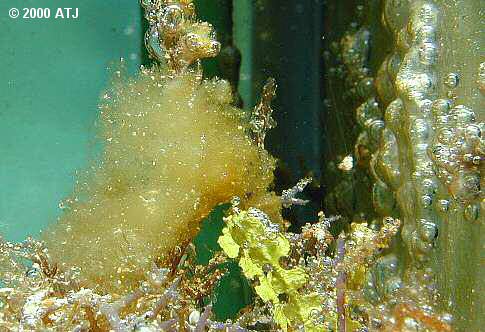
Dinoflagellates (60G)
The commonly encountered algae are grouped into the kingdom Protista (or Protoctista), which also includes protozoans and multicellular or multinucleate autotrophs such as water molds. It was not all that long ago that the algae were included in the plant kingdom and protozoans were grouped with animals.
The list of references at the bottom of the page may prove useful in identifying hitchhiker algae.
Diatoms are small single cell algae and are frequently encountered in the early stages of a tank's cycle. You normally see a brown dusting of algae lightly on the glass and rocks in the first few weeks of a tank's life. Diatoms will stay around for the life of the tank and are a sign that the tank is healthy.
Dinoflagellates are best know for the damage they cause with things like "red tides". This is cause by a toxic species, but not all species of dinoflagellates are toxic. In fact, the zooxanthellae in corals and anemones are dinoflagellates.
In the aquarium, dinoflagellate blooms are common during the cycling of a new tank, but prolonged existance is usually related to too much organic matter in the water. Dinoflagellates look a lot like snot and frequently have a lot of air bubbles when exposed to high light intensity.

Dinoflagellates (60G)
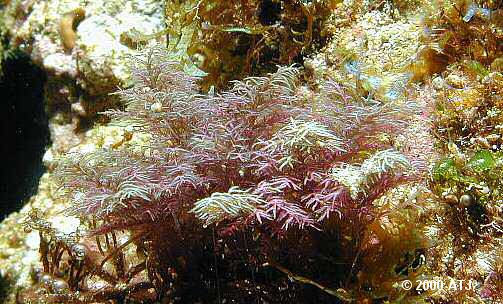
Red alga (60G)
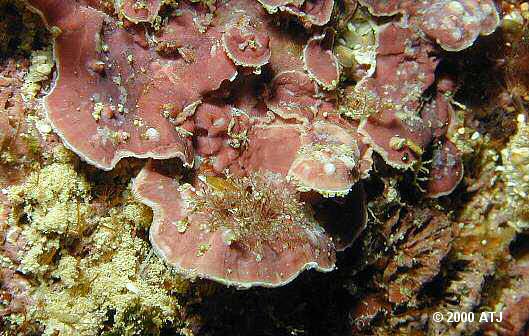
Coralline alga, probably Mesophyllum sp. (60G)
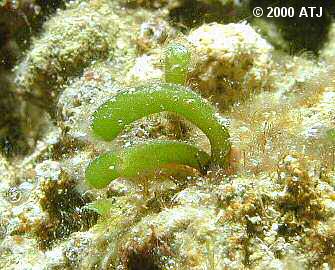
Green alga, Neomeris sp. (60G)

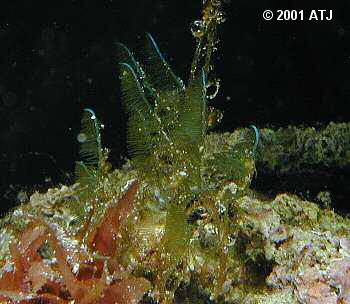 Bryopsis (50G1)
Bryopsis (50G1)
 Sailor's eyeballs, Ventricaria ventricosa (Syn. Valonia ventricosa) (50G1)
Sailor's eyeballs, Ventricaria ventricosa (Syn. Valonia ventricosa) (50G1)

Green calcareous alga, Halimeda sp. (60G)

Green alga, Ulva sp. (60G)

Green alga, Caulerpa nummularia (50G1)
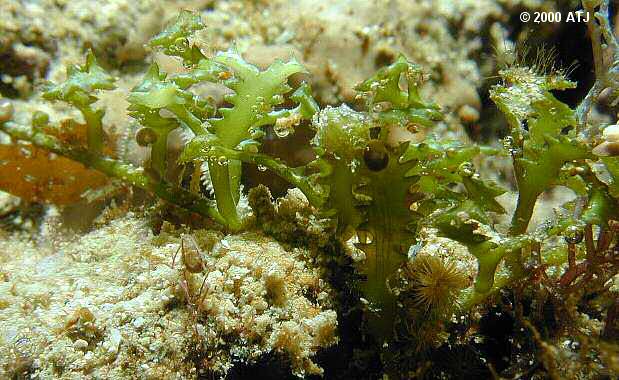
Green alga, Caulerpa serrulata (60G)
Allen G.R. and Steene R. 1998. Indo-Pacific Coral Reef Field Guide. Tropical Reef Research, Singapore. 378pp.
Cribb A.B. 1996. Seaweeds of Queensland: a naturalist's guide. The Queensland Naturalists' Club, Birsbane. 130pp.
Edgar G.J. 2000. Australian Marine Life: The Plants and Animals of Temperate Waters. New Holand, Sydney. 528pp.
Last updated: 4 June 2006